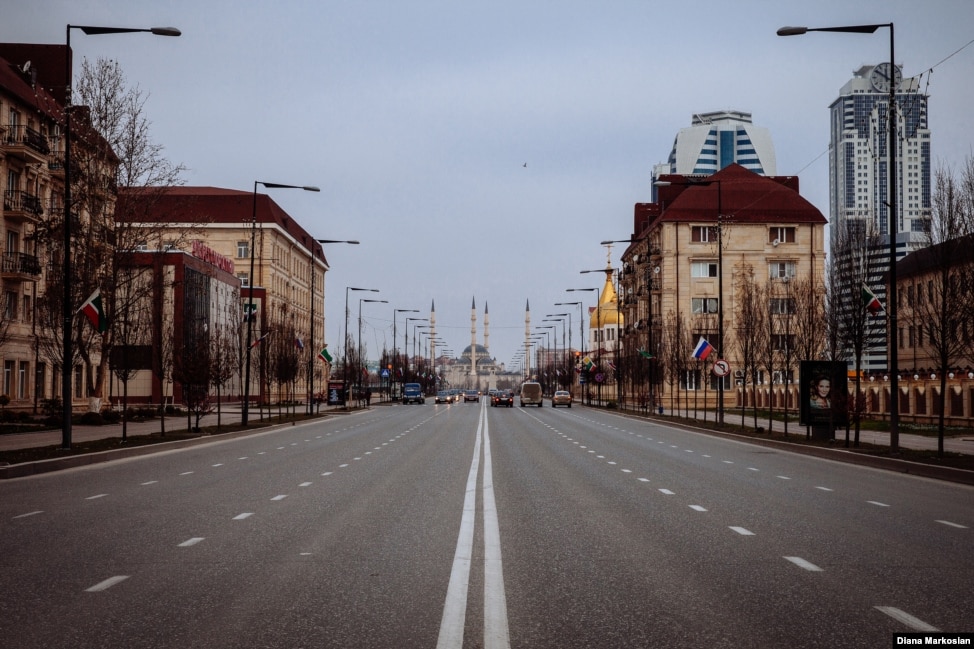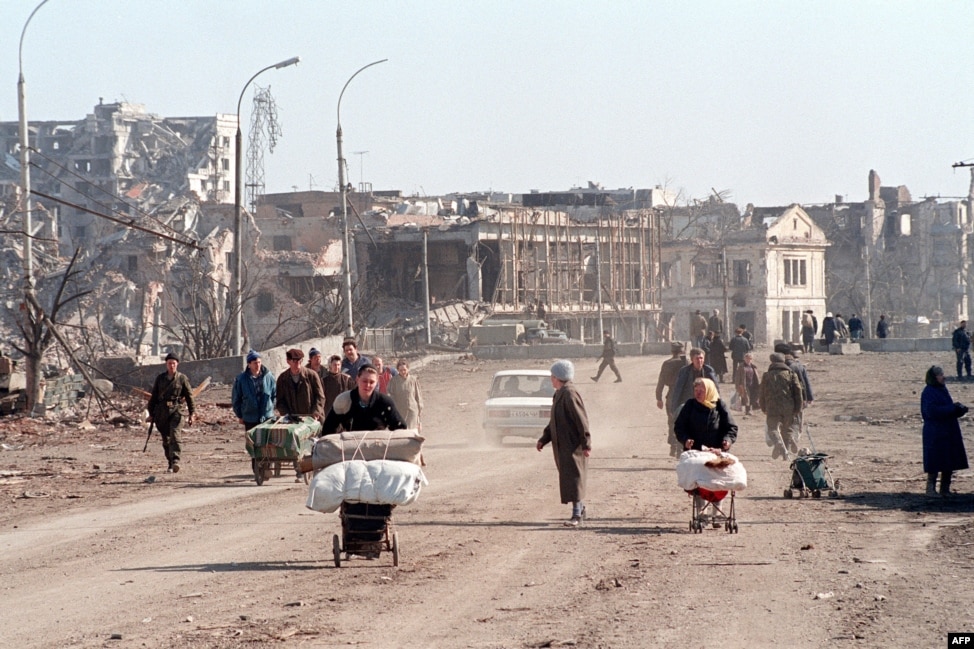Diana Markosian traveled to the Chechen capital, Grozny, to document a city transformed. These images show streets and buildings pulverized during the first Chechen war of 1994-96, and how they look today - after the city's massive refurbishment.
Around 80,000 people were killed as Russian forces flattened Grozny with artillery, tanks and aerial bombardment. They have no monument. The reconstruction of the city by Kremlin-loyal Chechen leader Ramzan Kadyrov has airbrushed the victims from history. (RFE/RL)


In 1995, Prospekt Lenina (Lenin Street) was a scene of destruction and refugees. The white building is a ruined music school. Now, the street is renamed Prospekt Kadyrova (Kadyrov Street), leading to a grand mosque - by some accounts the largest in Europe.

January 1995, a Chechen fighter keeps watch as civilians cross the square next to the presidential palace, the gutted building in the background. Today, the huge mosque stands on the site of the palace. A monument has been erected to pro-Kremlin Chechen forces killed fighting Islamist fighters. It is surrounded by old Chechen grave stones, which commemorate Chechens killed by Stalin.

Prospekt Mira (Peace Street) in the center of Grozny, looking towards the central market place. No traces now of the devastation visible in 1996.

Minutka Square was the scene of some of the bloodiest battles. It has also been completely rebuilt.

A view looking north along Prospekt Mira, from the corner with Krasnoflotskaya (Red Fleet Street).

The market place at the end of Prospekt Mira is bustling amid the ruins in the photo taken in September 1996. Chechen fighters are driving away, with a portrait of their leader, Dzhokar Dudayev, in the windscreen. The market has now been moved elsewhere, the ruins replaced with new housing blocks.



